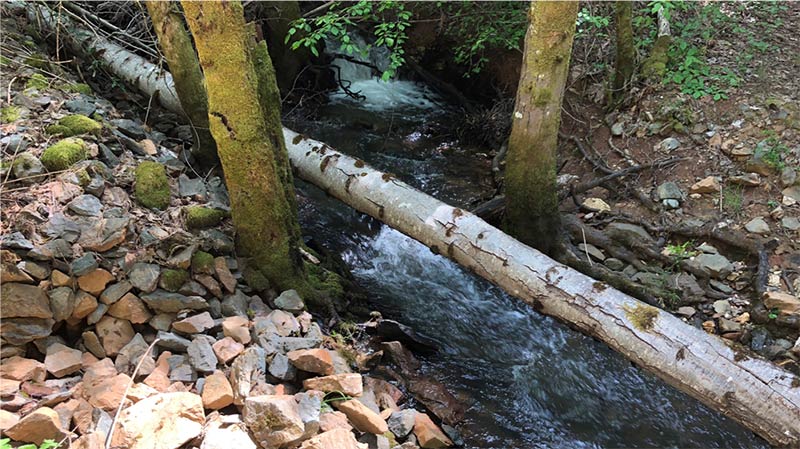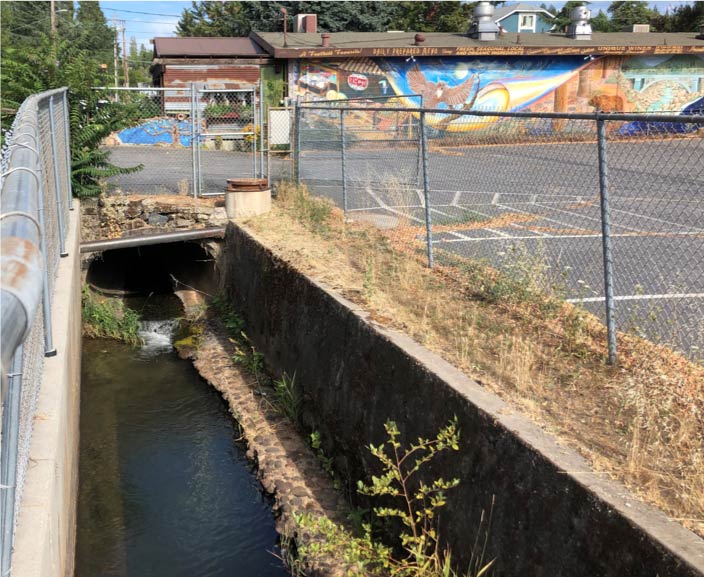Water Discharge
Water Discharge
The groundwater is treated to remove Iron, Manganese, and all other elements of concern and will meet the strict standards of NPDES permit CAG995002, requiring quality as good or better than drinking water quality, before being discharged to South Fork Wolf Creek. The surplus of ~1,200 acre – ft per year provides a benefit to downstream users and fish. The average discharge rate is ~1.9 cfs and the maximum discharge rate is 5.6 cfs.
This amount of water, based on extensive geomorphic fieldwork, does not result in substantial erosion or siltation and there are no biological impacts from the water discharge.
This amount of water, combined with the natural baseflow, is far less than the capacity of the creek. The maximum combined baseflow being ~15 cfs versus a “bank-full” event of ~80 cfs.

NPDES PERMIT VS. DRINKING WATER STANDARDS
Storms
The project includes the construction of a storm-water detention pond. The project will have no impact or increase of flow to creeks during storm events. Consequently, there is no impact to the culvert system of Grass Valley. Post-project storm-water discharge, including the treated mine water discharge, will be equal to or less than pre-project storm-water discharge.



